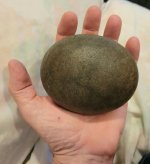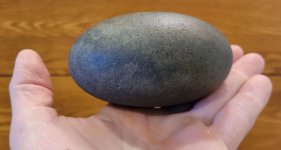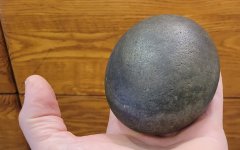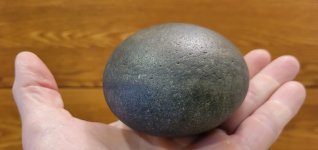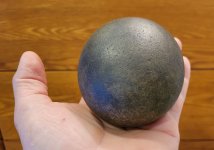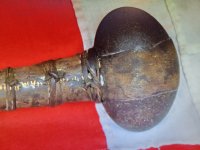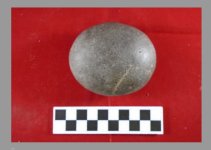- Mar 30, 2020
- 447
- 3,197
- Primary Interest:
- All Treasure Hunting
Today I got a second day out with my new Manticore. In regards to that, I will briefly say I'm impressed with the machine after logging in 9 months with a new Equinox 900. More on that later. I found a bunch of interesting objects including a buckle, buttons, axe head, musket balls, and an 1864 Indian Head penny. Lead in ceramic glaze resulted in finding several old broken pieces. I was near a cell tower and major electric trunk lines. The Manticore successfully tamed that noise floor.
I was detecting in a mature forest which was cultivated during the early 1700's colonial period through to WWII. This is clearly indicated on maps I have from the 1830's and 1870's. Also, it's easy to see land that was once heavily cultivated by colonials. Over time they picked out most of the rocks and even small stones. I had a strong deep signal which turned out to be a silver colonial button at 6" depth. Near this, I happened to see a stone partially buried in the leaf litter. The stone is very dense green/black quartz and polished to near perfect symmetry. Slippery to hold, it doesn't have peck marks like a hammerstone nor striations found on a grinding stone. Previously I had found three copper arrowheads nearby plus assorted lithics.
I was detecting in a mature forest which was cultivated during the early 1700's colonial period through to WWII. This is clearly indicated on maps I have from the 1830's and 1870's. Also, it's easy to see land that was once heavily cultivated by colonials. Over time they picked out most of the rocks and even small stones. I had a strong deep signal which turned out to be a silver colonial button at 6" depth. Near this, I happened to see a stone partially buried in the leaf litter. The stone is very dense green/black quartz and polished to near perfect symmetry. Slippery to hold, it doesn't have peck marks like a hammerstone nor striations found on a grinding stone. Previously I had found three copper arrowheads nearby plus assorted lithics.
Attachments
Last edited:
Upvote
16



